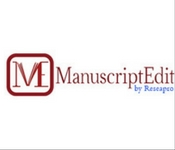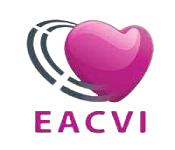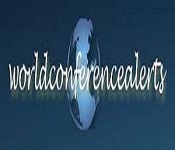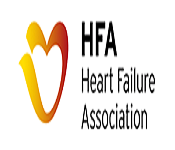Theme: Modern Evolution in the field of Global Heart Summit
HEART SUMMIT 2022
Conference Series llc Ltd. is inviting all participants across the globe to attend Global Heart Summit on April 25-26, 2022, Rome Italy . This Cardiology Conference will bring together world-class professors, scientists and cardiologists to discuss Clinical Cardiology, Emergency Medical Service, Cardiac Emergencies, Emergency and acute care Medicine, Pediatric Emergencies, Emergency Nursing, Pediatric Cardiology, Cardiovascular Surgery, Hypertension and Health care, Electrocardiography, Cardiac, Cardiac Pharmacology, Emergency Imaging, Gynecologic/Obstetric Emergencies, Endocrine/Neurological Emergencies, Cardiac Nursing, Nutrition, Diet & Exercise, Cardiac and Cardiovascular Research, Heart Devices and Diabetes, Obesity & Stroke.
HEART SUMMIT 2022 is designed to provide diverse and current education that will keep cardiology professionals a breast of the issues affecting the prevention, diagnosis and treatment of cardiovascular disease. The conference will be organized around the theme "Modern Evolution in the field of Global Heart Summit”.
HEART SUMMIT 2022 aims to provide an opportunity to share knowledge, expertise along with unparalleled networking opportunities between a large number of medical professionals like Directors, Heads, Deans, Professors, Scientists, Researchers, Cardiologists, Founders and Employees of the related companies, Associations, Organizations, Laboratory members and Young researchers working in the field of Cardiology & Heart treatment. This Cardiology conference mainly focuses on spreading the awareness about challenges in this fields and how to prevent and manage the techniques of Cardiac Imaging, Cardiology and Cardiac nursing.
Conference Series llc Ltd. Organizes 300+ conferences, 500+workshops and 200+symposiums on Clinical, Medicine, Nursing, cardiology diagnosis workshops, cardiac nursing conferences, Cardiology Conferences, Heart conferences and Science & Technology every year across USA, Europe, Asia, Middle East, Australia and UK with support from 1000 more scientific societies and Publishes 500 open access journals which contains over 30000 eminent personalities, reputed scientists as editorial board members.
Why to attend??
Encounter the target market with members from across the globe, committed to learn about Cardiology techniques. This is the best opportunity to outreach the largest gathering of participants from around the world. Conduct presentations, distribute and update knowledge about the current situation of nuclear cardiology & echocardiography technique and receive name recognition at this 2-days event. World-eminent speakers, most recent researches, latest treatment techniques and the advanced updates in Nuclear Cardiology are the principal features of Cardiology Conferences.
Target Audience:
Our Organization would be privileged to welcome the:
Directors of Cardiology and related Programs or Associations
Heads, Deans and Professors of Cardiology and related departments
Scientists and Researchers
Cardiology Associations and Organizations
Laboratory members and Students working in the field of Cardiology.
Sessions and tracks
Track 1: Clinical Cardiology
Clinical Cardiology includes studies appertain to cardiac diseases, cardiovascular heart disease, congenital heart diseases, coronary artery disease and their epidemiology and pathophysiology of the heart. The therapeutic procedures involving diagnosis and management of cardiac diseases like cardiovascular devices, cardiac regeneration, cardiac medicine, electrophysiology, cardiac surgery and identification of risk factors for cardiovascular diseases.
Track 2: Emergency Medical Service
Emergency medical services provides some certain of all immediate services like transport, ambulance services, medical care and many more to those patients who need urgent medical attention and treatment. Ambulance is known as the primary vehicles for delivering EMS, in some place’s cars, motorcycle and boats are also used.
Track 3: Cardiac Emergencies
Cardiac emergencies is a chronic condition that can trigger symptoms such as shortness of breath, fluid retention, rapid or irregular heartbeats, and more are life-threatening disorders, they should be recognized and treated immediately to minimize the risk of morbidity and mortality.
Track 4: Emergency and acute care Medicine
In the present era Emergency medicine is the most prime focus of research in medicinal research.it is one of medical specialty treatment for the patients with injuries or illnesses which requires immediate medical attention in the acute phase. Generally, Urgent care is served by nurses, physician assistants, and medical assistants.
Track 5: Pediatric Emergencies
A pediatric emergency deals with the children and teens that are acutely ill or injured. A pediatric emergency physician is trained to take care of the problems that require immediate medical help. These problems are often serious and may be life-threatening for children and teens.
Track 6: Emergency Nursing
An emergency nurse is one who is appointed to patients as they arrive within the emergency department. Therefore, the emergency nurse should be sure-handed, active fast, correct physical examination, early recognition of dangerous conditions.
Track 7: Pediatric Cardiology
Pediatric Cardiology is for diagnosing congenital heart defects and performing diagnostic procedures such as electrophysiology studies echocardiograms and cardiac catheterization Different types of inflammatory heart disease include myocarditis. Kawasaki’s disease is a rare childhood disease that affects blood vessels. Pericardial diseases may clinically be classified as acute pericarditis, pericardial effusion, cardiac tamponed and constrictive pericarditis. Infectious endocarditis is a form of endocarditis. It is the inflammation of the inner tissues of the heart. These are the major inflammatory defects for Babies Heart.
Track 8: Cardiovascular Surgery
The main role of cardiovascular surgeons is to operate the heart and blood vessels to repair damage caused by diseases or disorders of the cardiovascular system. Heart valve repair and replacement, heart defect repair, coronary artery bypass, aneurysm repair, Trans myocardial laser revascularization, and heart transplantation are performed by Cardiovascular surgeons
Track 9: Hypertension and Health care
High blood pressure is a serious cardiac disease. The pressure of the blood being pumped through the arteries is higher during hypertension It often has no warning signs or symptoms Over time, the constant pressure overload causes accumulating damage that eventually becomes more than circulatory system can handle, often leading to serious health problems Treating high blood pressure take a pronged approach including, medication, exercise and diet changes.
Track 10: Electrocardiography
Electrocardiography is the process of recording the electrical activity of the heart over a period using electrodes placed on the skin. These electrodes detect the tiny electrical changes on the skin that arise from the heart muscle's electrophysiological pattern of depolarizing and repolarizing during each heartbeat. This is a type of technique very commonly performed to detect any cardiac problems.
Track 11: Cardiac Imaging Techniques
Cardiac imaging is done to diagnose the heart condition by a physician. Medical specialty professional organizations discourage the use of routine cardiac imaging during pre-operative assessment for patients about to undergo low or mid-risk non-cardiac surgery because the procedure carries risks and is unlikely to result in the change of a patient's management. Stress cardiac imaging is discouraged in the evaluation of patients without cardiac symptoms or in routine follow-ups
Track 12: Cardiac Pharmacology
Cardiovascular pharmacology is one of the important part dealing with the treatment of heart disease. Cardiac medications are used to treat the cardiac, circulatory and vascular system. Various cardiovascular agents are available to treat various cardiovascular conditions. Sodium, potassium, calcium channel blockers, ACE inhibitors and cardiac biomarkers. Three new drugs were introduced in 2015. There are many types of cardiovascular drugs on the market that include cardiac glycosides, anticoagulants, antiarrhythmic agents, anti-angina agents and antihypertensive agents.
Track 13: Emergency Imaging
From the past years Radiologic imaging has brought tremendous advancements in the fields of emergency medicine and surgery. In the present era Emergency radiology is one of the important departments and the presence of radiologists on site in major accident. Emergency departments are essential for the smooth running of the service.
Track 14: Gynecologic/Obstetric Emergencies
Gynecologic/Obstetric Emergencies mainly occurs in women during reproductive age and it mostly affects women of all ages. The most common emergencies were prolonged labor, postpartum hemorrhage, severe pregnancy-induced hypertension, and fatal distress. Prevention or effective management of obstetric emergencies will help to reduce maternal and perinatal mortality in our environment.
Track 15: Endocrine/Neurological Emergencies
Endocrine emergencies represent a group of potentially life-threatening conditions that are frequently overlooked, resulting in delays in both diagnosis and treatment, factors that further contribute to their already high associated mortality rates. Delay in the treatment of endocrine disorders may result in the death of patient. If Neurological Emergencies is not diagnosed and treated quickly, they may cause catastrophic results, with high rates of long-term disability and death. Prompt recognition is an important skill. Emergency department management of patients with neurological emergencies has witnessed a significant improvement in the treatment including stroke, traumatic brain injury, and subarachnoid hemorrhage, continues to evolve at a rapid pace.
Track 16: Cardiac Nursing
Cardiac Nursing has a place with that works with patients who experience the ill effects of different states of the cardiovascular framework. Under the supervision of a cardiologist a cardiac nurse caretaker cures those conditions like unsteady angina, congestive heart disappointment, myocardial dead tissue cardiomyopathy, coronary course sickness and heart dysrhythmia. Cardiac medical nurse are prepared for various practice range, working operation theaters, cardiovascular recovery focuses, cardiovascular consideration focus clinical exploration, including coronary consideration units, heart catheterization, serious patient consideration units, cardiovascular surgery wards, cardiovascular concentrated consideration units and cardiovascular restorative wards
Track 17: Nutrition, Diet & Exercise
One will notice immediate changes in energy levels If you pair regular exercise with a well-balanced diet. More importantly, consistently eating well and exercising will improve your health and extend your lifespan. The guidelines for better health are engage in at least 150 minutes of aerobic exercise and full-body strength training sessions each week and eat a nutritionally diverse diet, low in fat and sodium, but high in fiber. One should take help of health care provider to devise a more detailed diet and fitness plan.
Track 18: Cardiac and Cardiovascular Research
The Cardiology Meeting supports awareness of the treatment of risk factors for Cardiac disorders. The most comprehensive provider of cardiovascular services for the prevention, detection, treatment and treatment of cardiovascular diseases. This annual cardiology meeting is a platform for postgraduate education and scientific work in the field of cardiology, angiology, hypertension and cardiac and vascular surgery. Reduces clinical events and premature death in people at risk of cardiovascular disease. Cardiovascular disease is treatable in initial treatment primarily focused on nutrition and lifestyle interventions. The medical meeting focuses on the treatment of diseases and new theories of diagnosis of blood vessels and vascular system or heart.
Track 19: Heart Devices
Heart Devices are electronic devices that help circulate a heart that is used too partially or completely to replace the function of a failing heart. The development of these wireless heart monitors marks a new era in medicine and the transition from healthcare to population levels to personalized medicine where appropriate patients are equipped with advanced biosensors which in turn have their data processed by sophisticated prediction algorithms will happen. Pacemakers, defibrillators, biosensors are cardiac devices used to treat heart disease.
Track 20: Diabetes, Obesity & Stroke
Obesity increases the risk of heart disease and stroke. But it damages more than just the heart and blood system. It is also the major cause of bile stones, osteoarthritis and respiratory problems. Obesity closely interferes with many health conditions that underlie cardiovascular disease, including high blood pressure, diabetes and abnormal blood cholesterol. This is a serious condition when your heart cannot pump enough blood to satisfy the needs of your body. After diabetes a person is at increased risk of heart disease and stroke. One can reduce the risk by maintaining blood glucose levels (also called blood sugar), blood pressure and blood cholesterol levels close to the recommended target values ​​- levels suggested by diabetes professionals for good health. Stroke and coronary heart disease can be caused by the same problem - atherosclerosis.
HEART SUMMIT 2022 will be the best platform for all the scientists, cardiologists, oncologists, electro physiologists, surgeons, nurses, research scholars, students who are working in this field to exchange their knowledge related to Cardiology and Cardiac Surgery. This international event is an effort to find an alternative for invasive imaging technique against heart diseases and heart failure conditions in adults & children.
In Europe:
The European market for interventional cardiology is leading towards maturity, mostly in Western Europe. Although the economic slowdown had a negative impact on revenues in 2012, it is expected that expanding applications of interventional systems and the popularization of hybrid solutions will drive market growth over the 2013-2017 period.
Market Trends in Europe Interventional Cardiology finds that the market earned approximately $336.7 million in 2012 and estimates this to reach $352.6 million in 2016. Novel applications, the demand for hybrid solutions and the need for new systems in Eastern Europe will fuel market growth.
In America:
Geographically, North America has the highest market share in 2013 due to high awareness about the heart diseases. According to the Centers for Disease Control and Prevention (CDC), every year about 610,000 people in America die of heart diseases. Likewise, annually 735,000 Americans are victims of heart attacks. Thus, increasing of heart attacks in North America would increase the demand of cardiovascular drugs. However, Asia-Pacific region is expected to showcase the fastest growth rate in the future due to rise in aging population, increasing awareness and in other factors.
In Middle East:
Countries in Middle East and Africa bear a heavy burden from Ischemic heart disease. According to, Dubai Health Authority, Heart disease is the cause for every 3 in 10 deaths in the UAE. Huge funding in R&D and various initiatives by government is driving the growth for Ischemic heart Disease market in Middle East and Africa.
Middle-East and Africa Ischemic heart Disease market is growing steadily. The market is growing at the CAGR of 3.1% and expected to reach to US$ 2.84 billion by 2022.
In Asia:
Around 5 million Americans suffer from heart valve disease every year. Heart disease is considered as one of the leading cause of mortality. Thus, substantial rise in burden of heart valve disease is the major growth driver for the heart valve device market. Geographically, this report split Asia-Pacific into several key Regions, with sales (MT), revenue (Million USD), and market share and growth rate of Ischemic Heart Disease Drugs for these regions, from 2012 to 2022.
Cardiology universities:
Harvard University, USA
Johns Hopkins University, USA
Swansea University, UK
Kawasaki Medical University, Japan
Oxford University,UK
Cambridge University,UK
University of Toronto, Canada
Avalon medical University,USA
Imperial college, London
New York university
Cardiology Associations and Societies:
The American Heart association(AHA)
Heart Failure Society of America(HFSA)
American Society of Echocardiography(ASE)
Society of Invasive cardiovascular Professionals(SICP)
American Association of Heart Failure Nurses(AAHFN)
American Association of Nuclear Cardiology(ASNC)
Society of Geriatric cardiology
Asian Pacific Society of cardiology
European Society of cardiology
Conference Highlights
To share your views and research, please click here to register for the Conference.
To Collaborate Scientific Professionals around the World
| Conference Date | April 25-26, 2022 | ||
| Sponsors & Exhibitors |
|
||
| Speaker Opportunity Closed | |||
| Poster Opportunity Closed | Click Here to View | ||
Useful Links
Special Issues
All accepted abstracts will be published in respective Our International Journals.
- Journal of Interventional and General Cardiology
- International Journal of Cardiovascular Research
- Interventional Cardiology Journal
Abstracts will be provided with Digital Object Identifier by













